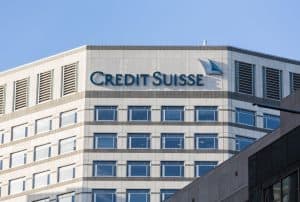 One of Credit Suisse’s most senior technical managers and engineers has left the Swiss investment bank after more than 20 years, The TRADE understands.
One of Credit Suisse’s most senior technical managers and engineers has left the Swiss investment bank after more than 20 years, The TRADE understands.
Neil Horlock, director and global architect within Global Markets at Credit Suisse, was responsible for exchange connectivity products and teams for order routing and market data in Europe, with a particular focus on low touch trading solutions.
He first joined Credit Suisse in 1998 but left the bank on 5 September. Horlock announced via a social media post that he plans to carry out independent consultancy work in the short term, while he assesses the landscape for more long-term opportunities.
“What a journey it’s been,” he said. “From screen-scraping market depth in the late 90s to smashing the sub-millisecond barrier in mid-00s. Helping to launch BOAT (now Simplitium) and Turquoise (now London Stock Exchange Group (LSEG). Pushing ahead in co-lo and proximity hosting.
“Watching as copper became fibre and even microwave, while FPGAs vied with CPUs as we explored the gap between the speed of execution and update agility on NanoStreams: A Hardware and Software Stack for Real-time Analytics.”
Horlock also became co-chair of the FIX protocol working group for clock synchronisation, represented Credit Suisse on the Nanostream project exploring high-powered computing, and led several consortium-based projects.
As co-chair of the clock synchroinsation group at FIX, Horlock examined the implications of MiFID II rules, including extensions for FIX protocols to support more precise time stamps and a methodology for meeting the traceability requirements,
“With all this speed came greater scrutiny, algo tagging, MiFID II & clock-synch, which gave us a new concept, traceable time, something no industry had been tasked, which, through the FIX Protocol Limited working groups, we helped each other and found consensus,” he concluded.